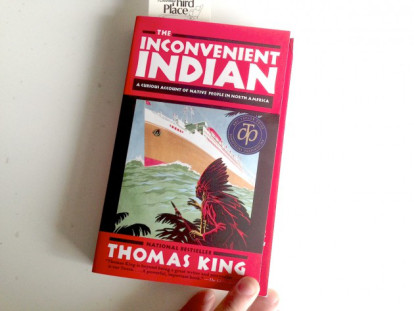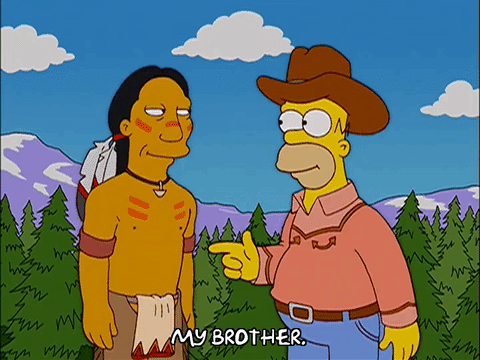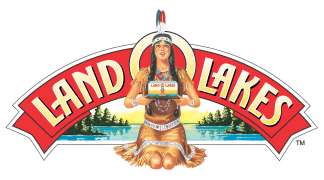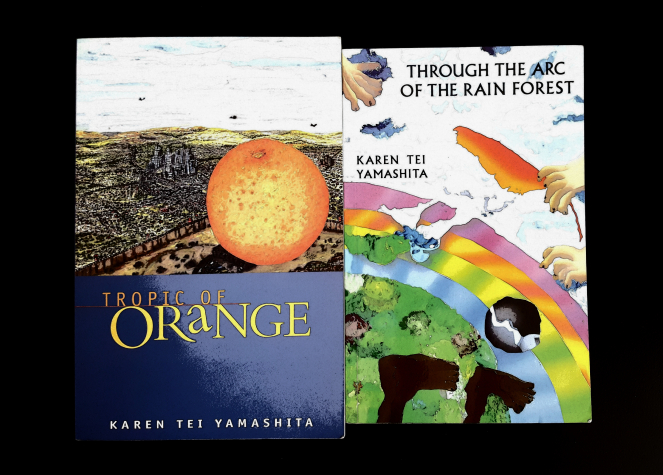
As somebody who has read countless non-fiction books, I can say that Thomas King’s novel, “The Inconvenient Indian” is definitely an informative and unique novel. The book provides a factual account of Indian–White relations in North America since the beginning of North American colonialism. Those who dislike non-fiction books would probably shrug at the idea of reading this book, however; it is very distinct in comparison to others. Rather than it being a super boring history textbook, King articulates his words to form blunt and sarcastic pieces of information that engage the reader. King’s background is also heavily incorporated in the novel; being raised on a native reservation, he was able to witness the impact post-colonization had on his community. In my opinion, this is what makes this book unique. Instead of writing a bunch of emotionless facts stringed together, King adds a personalized aspect to each historical event that sparks a reaction from readers, including myself.
From the beginning of the novel, I noted that King gives off the impression that he’s a witty, intellectual guy who does not care about offending anyone’s feelings. He presents his historical viewpoint bluntly without sugarcoating the truth. By doing so, he is able to directly communicate his ideas to the reader without causing any confusion. I find this style of writing effective, there were no instances where I had to wonder about what he was trying to dictate. Rather, I was appalled by how the facts he presented prove the dehumanization of natives throughout history and in today’s society. King stated that, “In our gated modern world, ruinous incursions such as Cuba and Vietnam are no longer assigned to one individual. Rather we have a well developed propagandistic sleight-of-hand that make the people and places we attack responsible for our aggressions (King 15).” When I read this portion of the text, it made me feel anger towards the colonizers; they used victimization as a tool to rationalize their inhumane actions against Natives Americans. Prominent political figures, such as William Rudford considered Aboriginals as “hideous bloodthirsty beasts” that prevented the growth of civilization and deserved to die (King 31). This racist mindset led colonizers to justify the Native genocide as a form a protection that served a purpose in “God’s will” (King 31).
 The Simpson’s ideal version of Native and non-Native interactions.
The Simpson’s ideal version of Native and non-Native interactions.
The author also directly presented several examples of the mistreatment First Nations have received from governments in the last hundred years. King blatantly debunked the myth that all natives in the U.S.A and Canada have special privileges when he stated, “The idea that either country gave First Nations something for free is horseshit” (King 52). Only “status Indians” — or people recognized by the federal government as “Indian” are eligible to receive fundings and there is only a limited number of applicant spots available. Also, according to King, First Nation benefit programs were previously used to attract Natives so governments could have better control over them. For instance, a 1905 amendment allowed the removal of enrolled Aboriginals on reserves that were to close to white communities, a 1930 amendment banned natives from public swimming pools, and in 1980 Natives could have their Indian status stripped away without consent (King 27). These facts made me feel saddened about the inequality First Nation people have faced, and helped me to understand why King used a vulgar term to refer to Aboriginal assistance programs. It also made me question the integrity of our government. If governments are supposed to serve the people, then why do they neglect problems within Indigenous communities?
Towards the second and third chapter, I began to feel empathetic towards the author. I sensed his feelings of exhaustion after repeatedly seeing the appropriation and negative portrayal of his culture in the Western world. King used sarcasm to demonstrate his feelings, and although they’re not direct, you can tell how he views these stereotypes as foolish. “From the frequency Dead Indians appear in advertising, in the name of businesses,as icons for sports teams, and as stalking goats for new age spiritual flimflam, you might think natives were a significant target for sales. We’re not of course, we don’t buy this crap. But there’s really no need to ask whom dead Indians are aimed at, is there?” (King 45). In the last sentence, he’s referring to how only non-Indians buy Native based
 “Land O’Lake is an American butter brand that uses a Native woman as their mascot.
“Land O’Lake is an American butter brand that uses a Native woman as their mascot.
products. These businesses use a stereotypical depiction of Native culture as a marketing scheme for their products. While I am not an aboriginal, I can still relate to the author about having my culture appropriated. Traditional Mexican clothing is often used for Halloween costumes or slapped on “Tex-Mex” food products in an effort to fake it’s authenticity. Whenever I see these portrayals, I get upset because of how they misuse my culture as an aesthetic for their brand. King finished the third chapter by sarcastically stating, “In the end, who really needs the whole of Native history when we can just watch a movie?” (King 57). His tone shifted my perspective on Native culture. Many of us non-Aboriginals have used popular Western movies, such as Pocahontas as the basis of our knowledge on Native American Culture. In order to improve our relationship with Indigenous communities, we must move past our ignorance and begin to respect their traditions.
Overall, the author’s use of writing techniques effectively challenged my viewpoints as a reader. I definitely look forward into reading the second portion of this book!
King, Thomas. The Inconvenient Indian illustrated: a curious account of native people in North America. Doubleday Canada, 2012.
*The page citations are from the ebook version of the novel.
Advertisements Share this:




